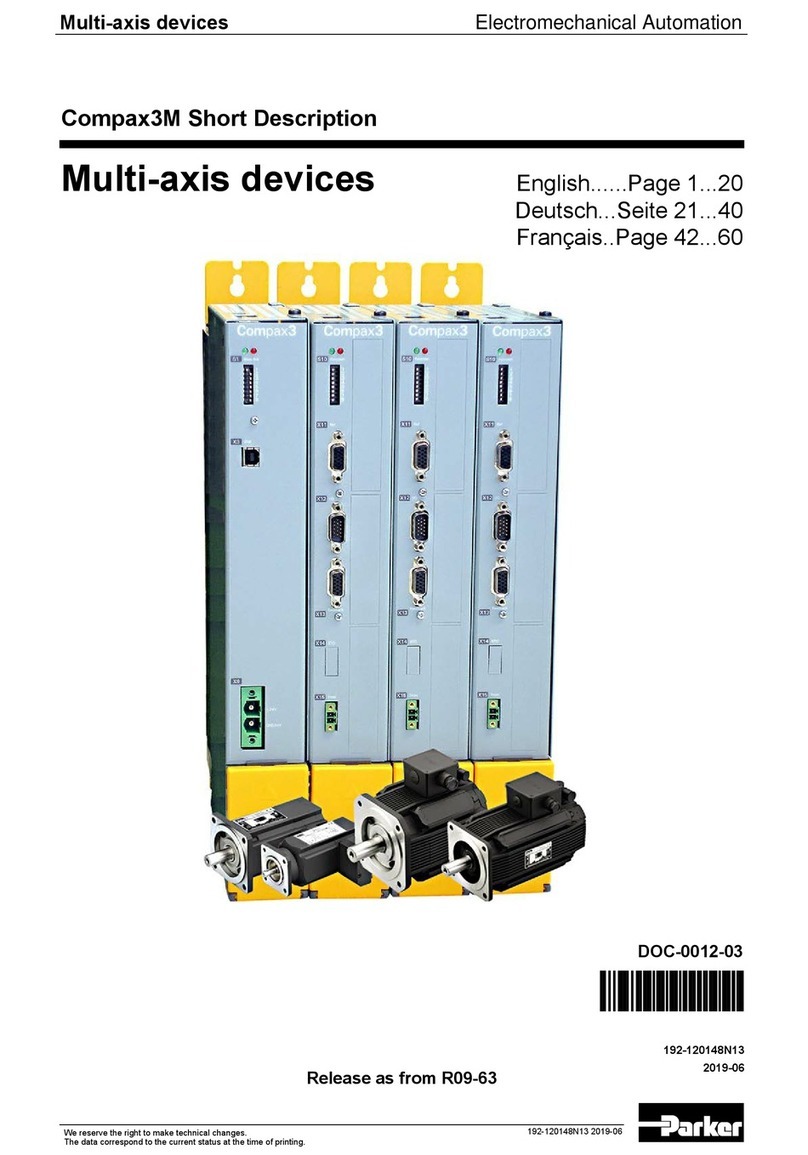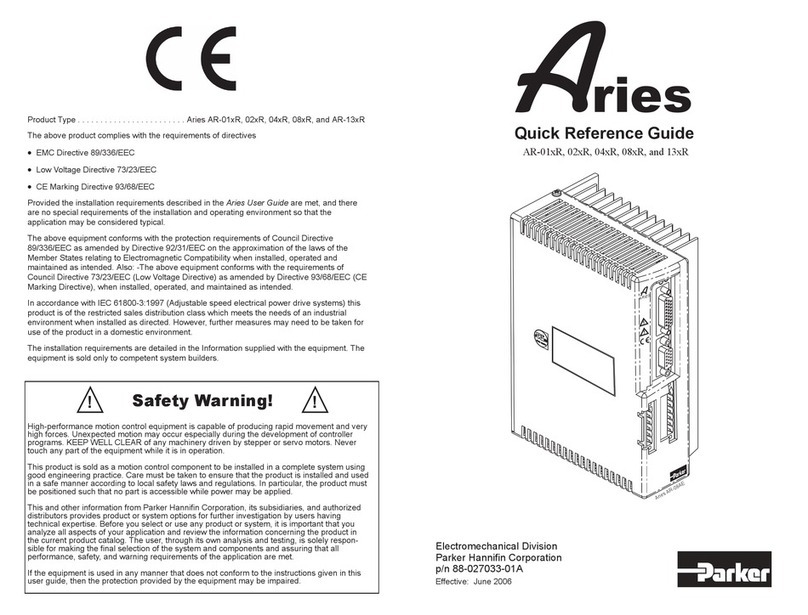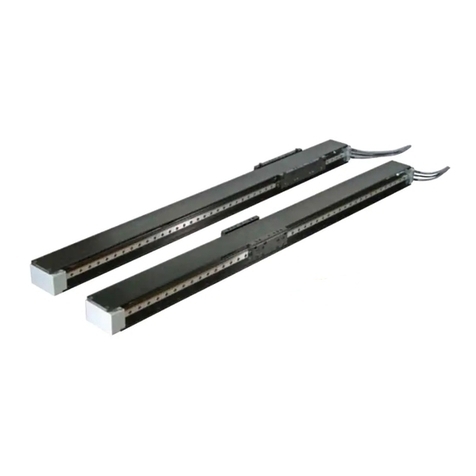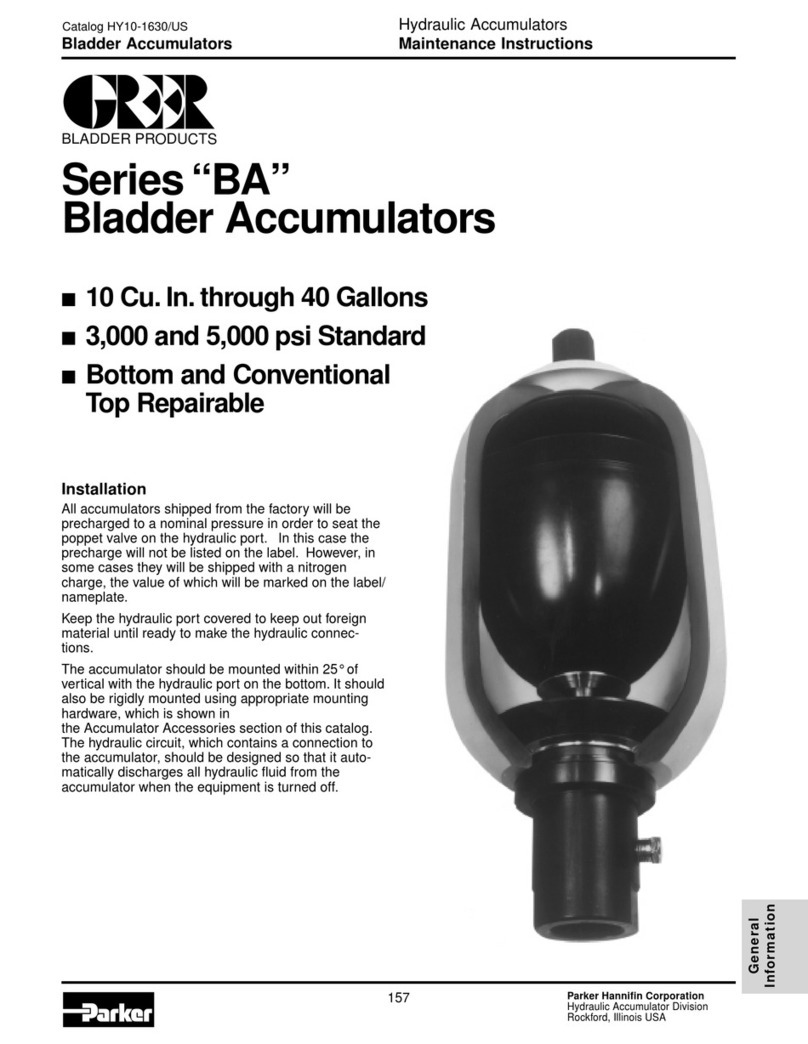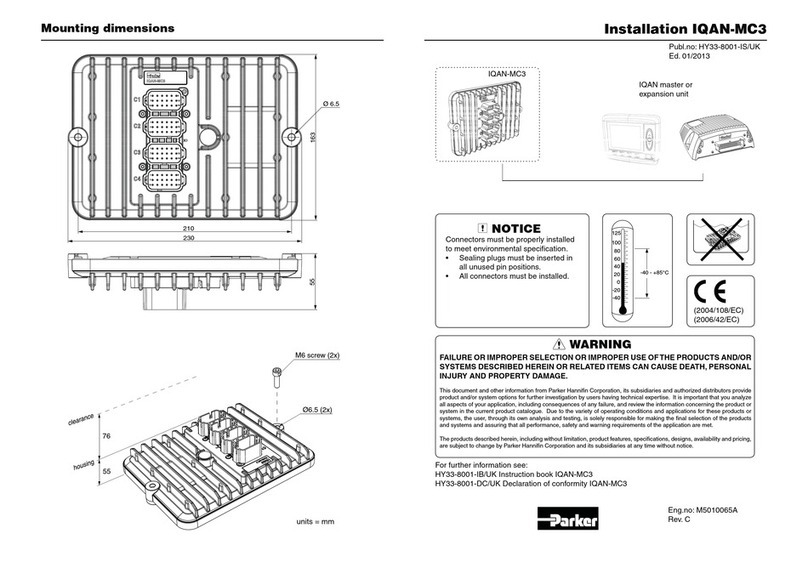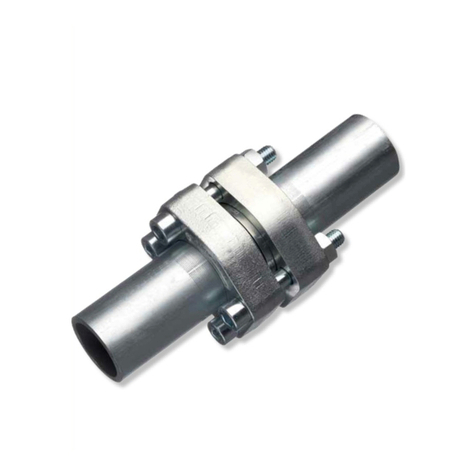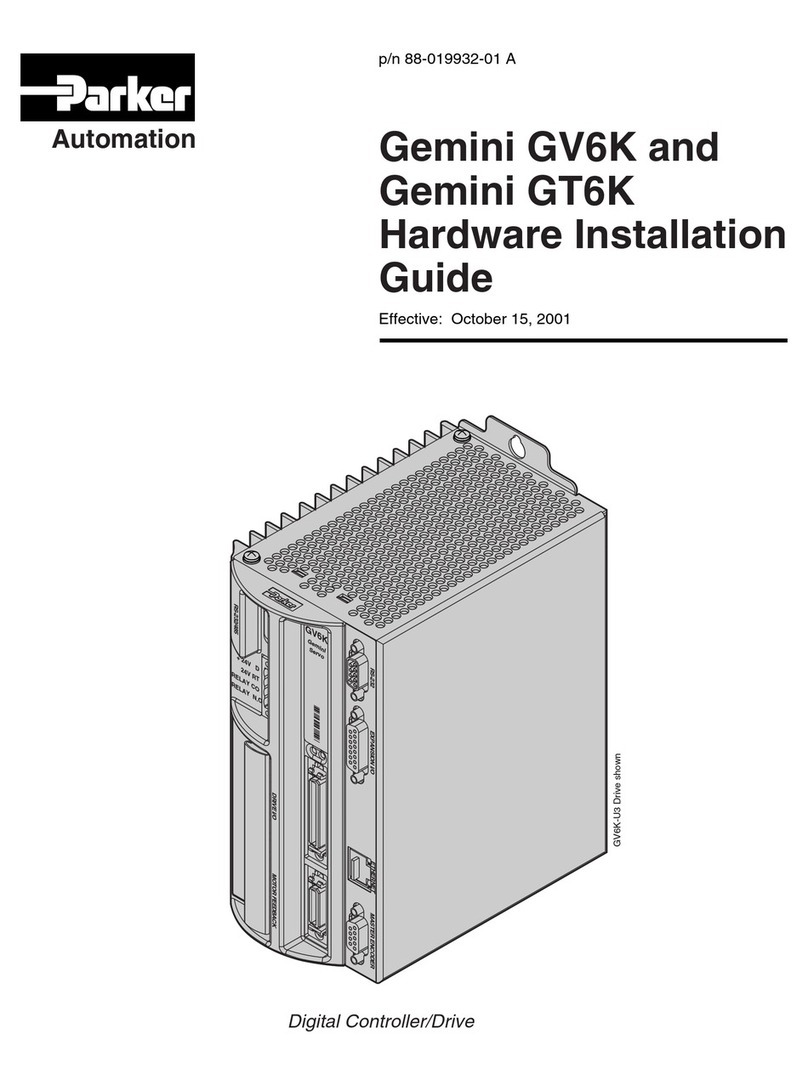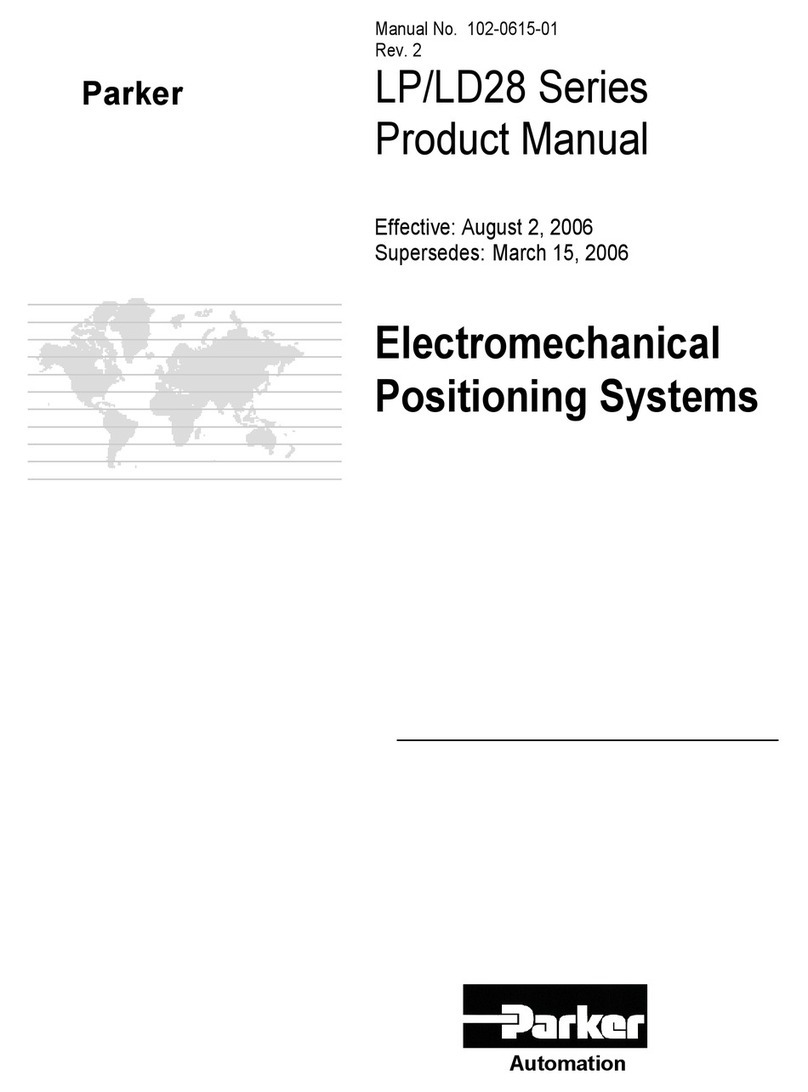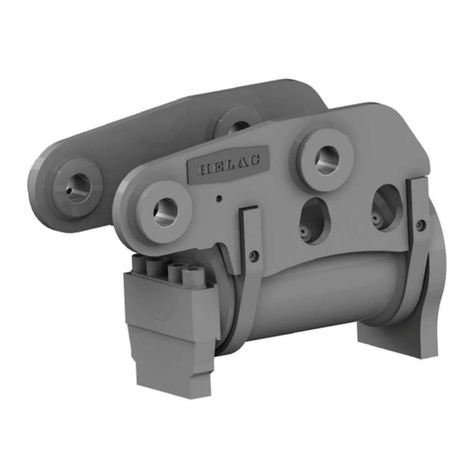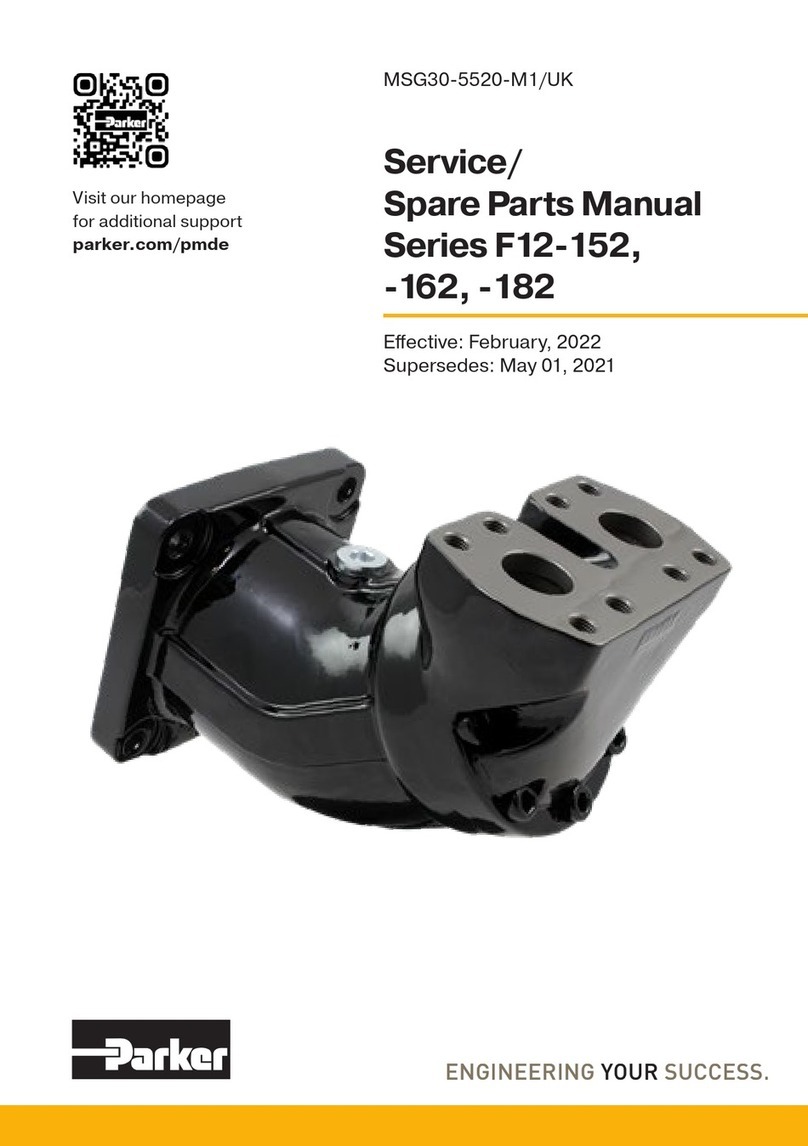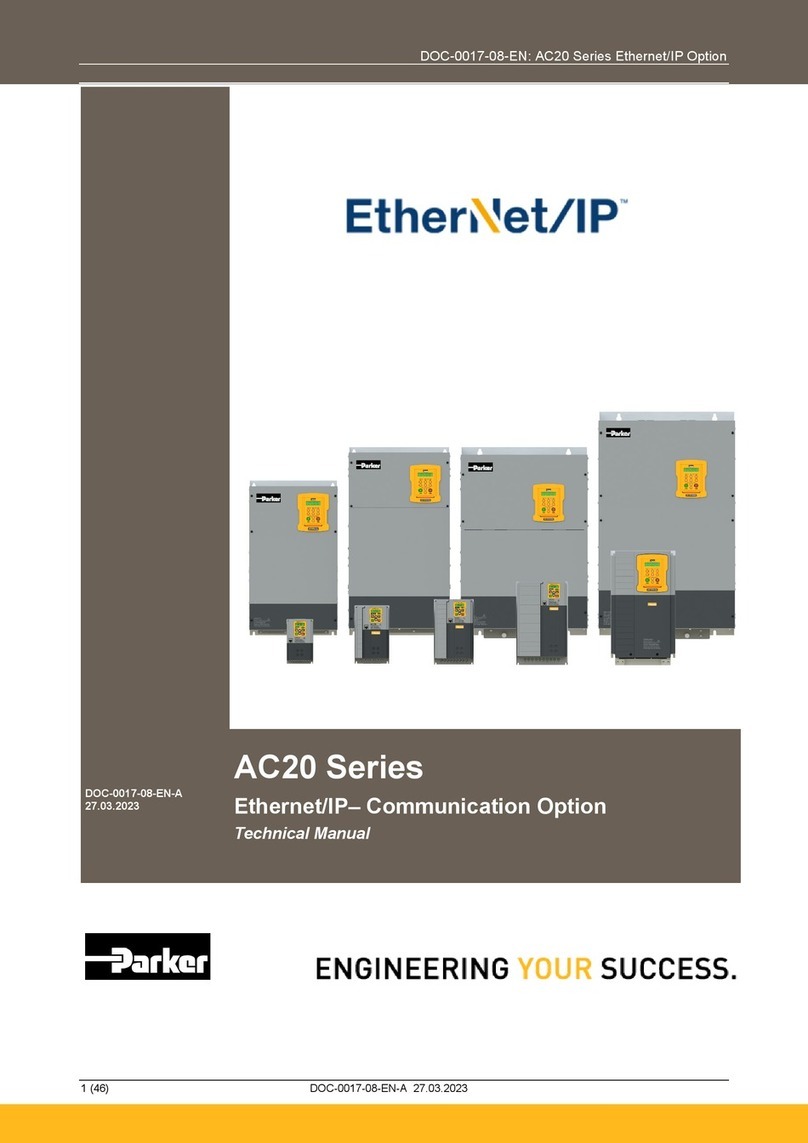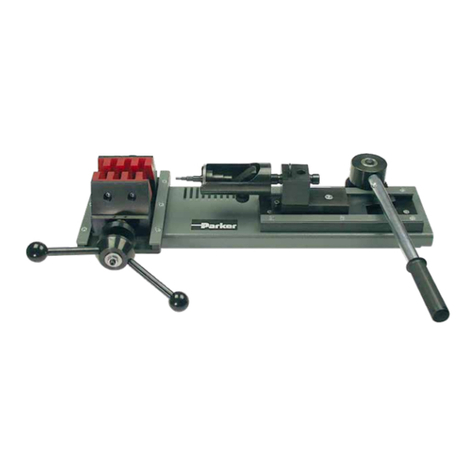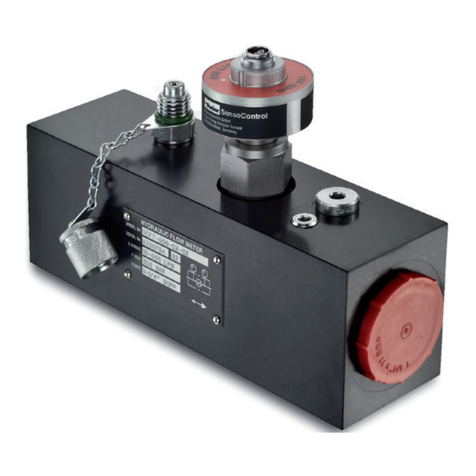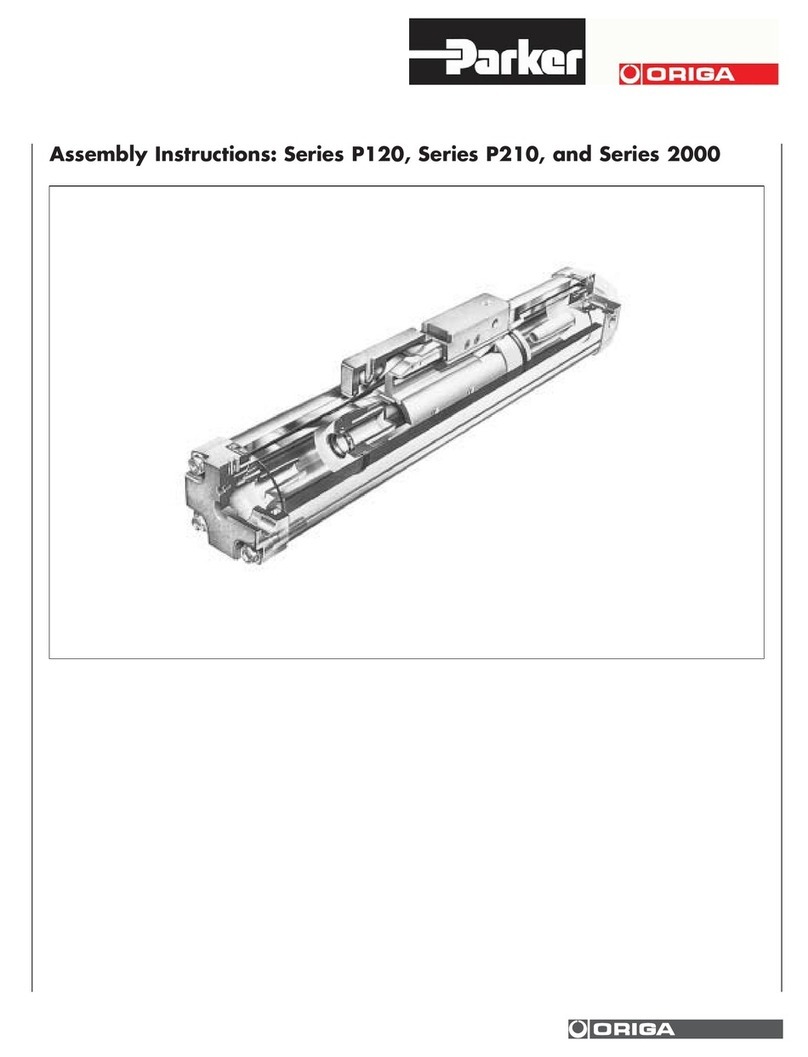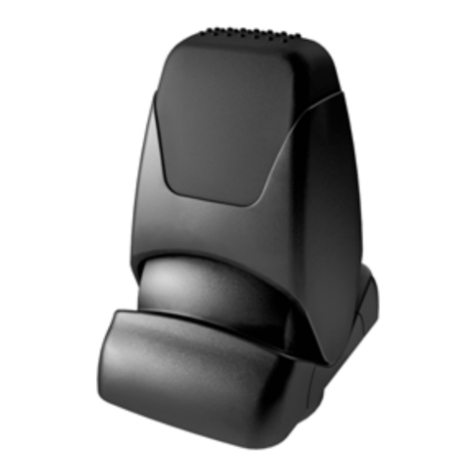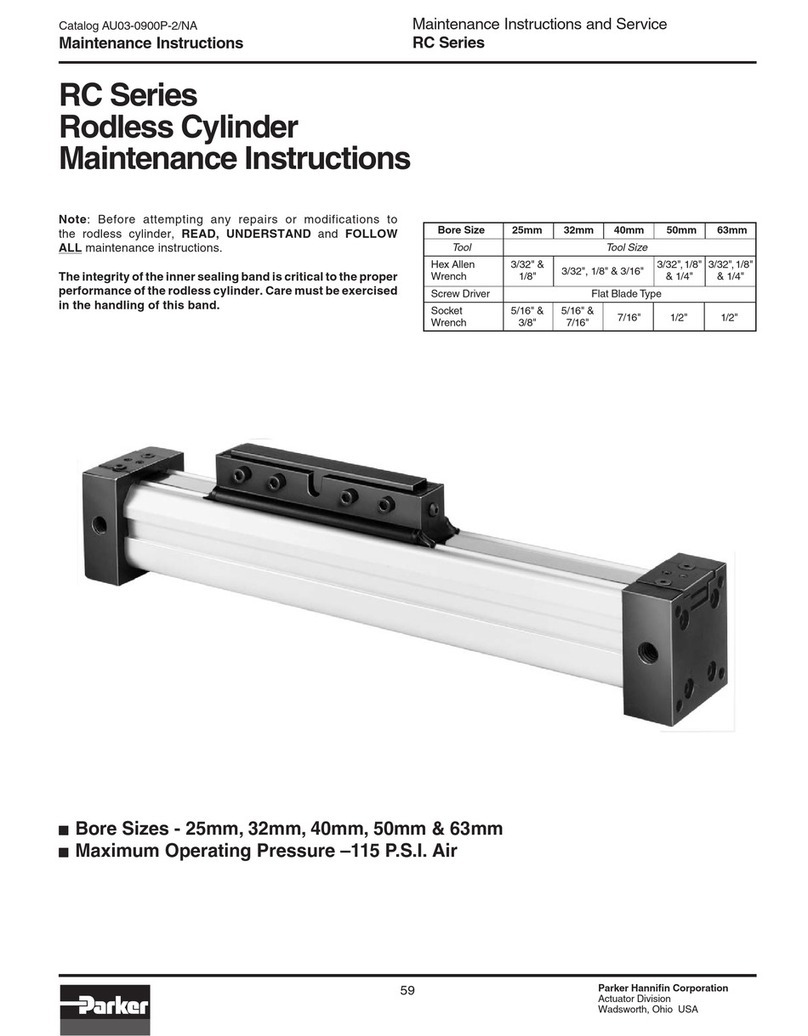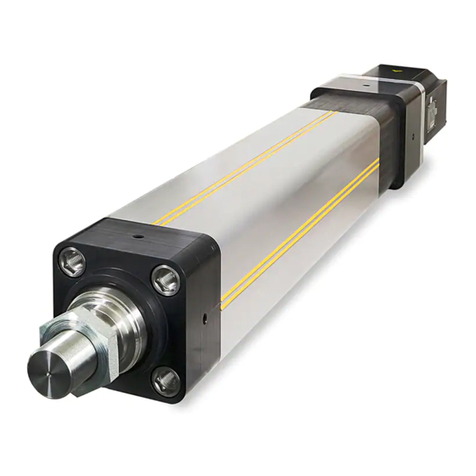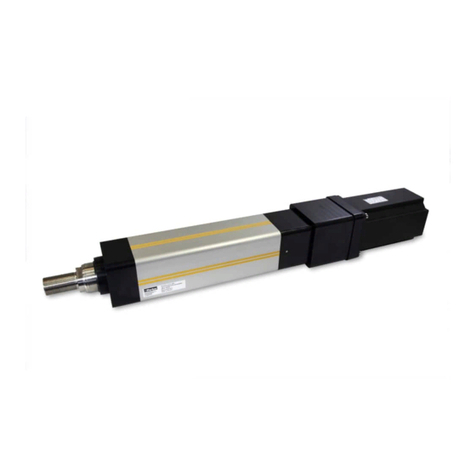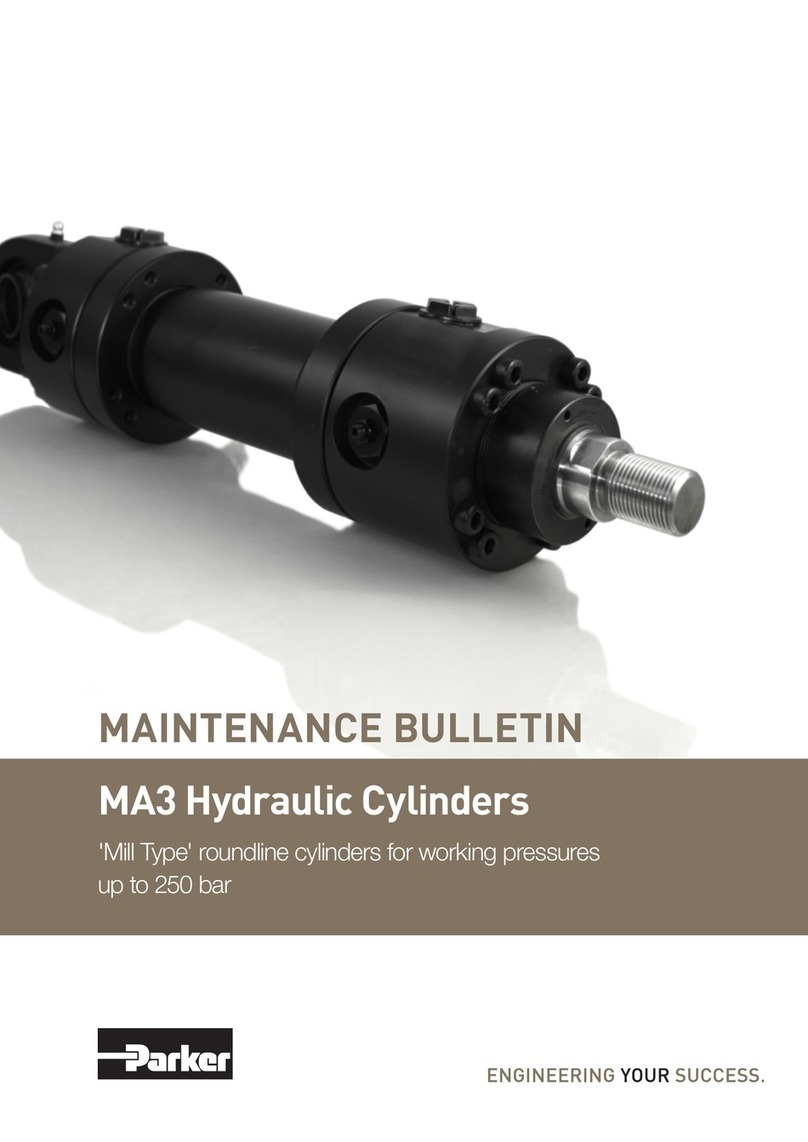
©Parker Hannifin GmbH Pat-Parker-Platz 1 41564 Kaarst
Tel.:
+49
2131
4016-0
Fax:
+49
2131
4016-9199
E-Mail: park[email protected] Web: www.olaer.de Stand 06/14
doc 6.140
Page 2 von 2
Assembly
Ensure that no foreign bodies are in the
accumulator.
To facilitate the reassembling of
bladder, smear it and vessel interior
with the system hydraulic fluid.
Press the upper part of the bladder
together and feed in though the
hydraulic end opening
(Fig. 7)
.
Lightly screw the name plate and gas
inlet valve sub-assembly nut on
(Fig. 8).
Check that the bladder is either folded
or twisted.
Insert the grid into the accumulator
shell until it reaches its stop
(Fig. 9).
Reinstall the spring ring
(Fig. 10).
Before mounting the reduction on the
hydraulic end, inflate the bladder slowly
with nitrogen to a pressure of 1 - 1,5
bar with the tester and pressurizer
instrument. Operate the tester and
pressurizer instrument as described in
its manual
(Fig. 11).
Mount the venting screw (not used with
every model) and gasket.
Tighten the name plate and gas inlet
valve sub-assembly nut fully
(Fig. 12).
Inflate the accumulator to the
precharge pressure required by the
system.
Fig. 8
Fig. 9
Fig. 10
Fig. 12
Fig. 11
First operation
Please note doc 6.120!
Before pressurizing the system, vent via the venting
screw if used. Retighten the screw carefully as soon
as the hydraulic fluid has left the vessel finally.
No welding/soldering or mechanical operations of
any kind must be undertaken on the accumulator!
Hydropneumatic accumulators are subject to official
pressure vessel regulations. These regulations
demands that the accumulator must be inspected
on a regular basis. The interval between inspections
varies from state to state.
Request the appertaining intervals for your
operation from the authorities responsible.
